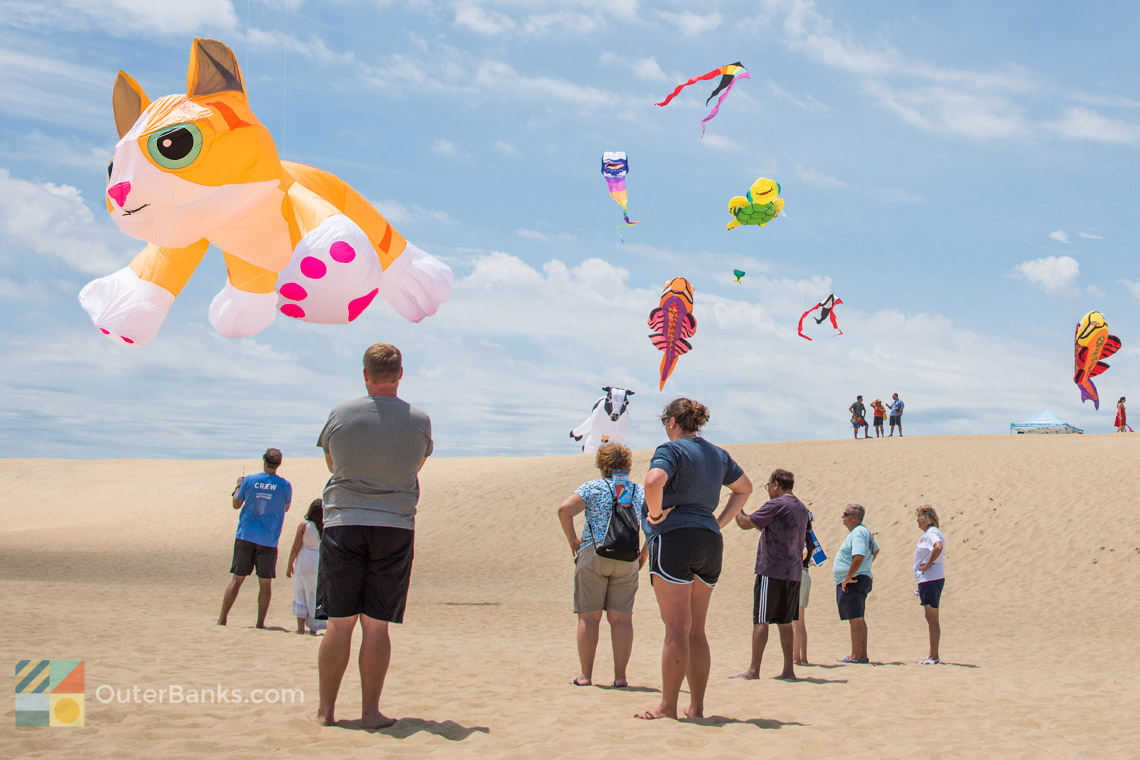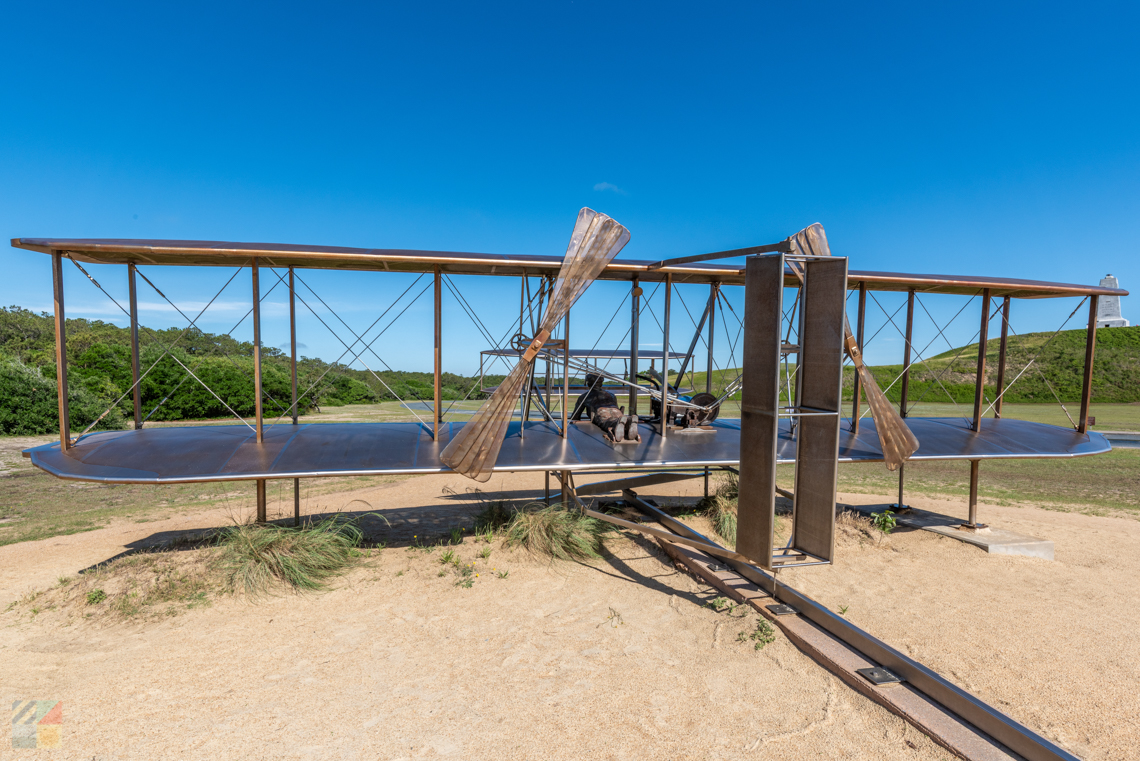In late May, 2017, visitors and locals alike were amazed to discover that a new island had surfaced off the popular Cape Point fishing beach in Buxton, just in time for the start of summer.
Quickly renowned for its piles of great shells and unbeatable views of the surrounding beaches, “Shelly Island” soon made national headlines for its sudden appearance, gorgeous setting, and tons of finds that have attracted beachcombers from all across the country.
What is Shelly Island?
Shelly Island first surfaced as a skinny sandbar in late April and early May, according to reports from avid fishermen along Cape Point. This “island” has appeared at this location before, with the last reported sighting occurring several decades ago, but locals attest that this is the widest and longest that the island has been in at least 40 years.
As of early July 2017, the island was roughly a mile long and three football fields wide, (depending on the tide and the currents), and it was already attracting a wave of media attention. National news networks, newspapers, and travel magazines highlighted this island that seemed to spring out of nowhere, and word spread quickly about both the island’s existence, as well as its wealth of shells that seemingly wash ashore on a daily basis.
The Shelly Island moniker isn’t official, but it is tied to one of the first mentions of the island in a national news story. In the story, a young visitor was quoted as naming the new island “Shelly Island” due to the sheer amount of shells along the beach, and the name stuck for visitors and media outlets alike.
Where is Shelly Island and How do you Get There?
Shelly Island is located in the town of Buxton on Hatteras Island, just south of the Cape Hatteras Lighthouse and just offshore of Cape Point, which is famed as one of the most popular surf fishing beaches along the Eastern Seaboard.
Visitors can reach the island by driving past the Cape Hatteras lighthouse, and heading to ORV ramp 43 / 44, which connects with Cape Point, and the eventual Shelly Island. Beach closures may occur during the spring, summer, and fall months due to threatened or endangered bird nesting activity, but an ORV corridor is often established to allow 4WD vehicles with a Beach Driving Permit to reach the area. (Beach Driving Permits can be obtained from the National Park Service on a weekly or annual basis.)
From the tip of Cape Point, visitor can use a kayak, stand-up paddle board, or surfboard to reach Shelly Island, and to embark on an exploration of this unique formation that has surfaced just off the coast. While swimmers can reach the site too in perfect conditions, many area organizations – including the Hatteras Island Rescue Squad and the National Park Service – have cautioned swimmers to steer clear due to swift currents, unexpected rip tides, and other potential threats in the waters.
What Kind of Shells are on Shelly Island?
Visitors and locals who have been making the trek out to this isolated island have attested that the name “Shelly Island” is an apt one. The beaches are littered with shells on a regular basis, which include some incredible and often rare finds for Outer Banks treasure hunters.
While making an expedition to Shelly Island, be on the lookout for these finds that are worth keeping by virtually any beachcomber’s standards:
Whelks – Often mistakenly or casually called “conchs,” the large whelks that wash ashore on Shelly Island are treasured and surprisingly common finds along the beach. Three varieties of whelks can be found on the local shoreline – Knobbed Whelks, Lightning Whelks, and the rare Channel Whelks – and can measure from just a couple inches long to 12” long.
Olive Shells – Olive shells have been common on Shelly Island, and can range in size from less than 1” long to 3” or even more. Often found close to the water, these treasures are surprisingly common in this new island destination.
Moon Shells or Shark’s Eyes – The circular moon shell or shark’s eye is also a regular find on this island, with several beachcombers reporting that they’ve found several moon shells that measure 3” wide or more. These cylindrical shells with a tight central spiral are always worth keeping, and can range from ¼” wide to apparently giant proportions.
Clams, mollusks, and other bivalves – One of the reasons why Shelly Island has held such a fascination with beachcombers is simply because many of the shells appear to be “supersized.” This is especially true with the local clams, mollusks, oysters, arc shells, and other bivalve shells that can be found on the beach and in the surrounding waters.
Ear Shells – Delicate and easy to overlook, these small and often stark white shells can be found buried in the piles of shells that wash up with the tide. Resembling an ear with a tight central spiral, these cool little shells are worth keeping for ornamental value alone.
Augers, Oyster Drillers, Wentletraps, and Other Small Shells – Tiny spiraled shells that are beautifully intricate can also be found by beachcombers with an excellent eye. Look for these delicate finds in tidal pools and in large piles of shells where these hidden gems may be overlooked.
Coral – Many visitors have reported finding big chunks of often fossilized corals along Shelly Island, which are rock hard yet intricate treasures in their own right.
Tips and Tricks for Visiting Shell Island
- Most important, don’t swim to the island. Use a kayak, paddle board, boat, or surfboard to reach this destination. The area surrounding Cape Point has deceptively rapid currents, rip tides, and even occasional sharks, so visitors will want to proceed with caution.
- The journey to reach Shelly Island is easier during low tide. This is when the channel of water separating the island from Cape Point is at its most narrow, and when the abundance of shells are arguably easiest to reach. Try to time a trip an hour or so before low tide to make the most out of the exceptional shelling conditions.
- If you’re bringing along a kayak or surfboard, you’ll likely need a 4WD vehicle and a Beach Driving Permit to comfortably reach the Cape Point launching point to the island. The walk there can be roughly a mile long, so a 4WD truck can certainly make the journey easier. Pick up a permit at the National Park Service station near the Cape Hatteras Lighthouse, or obtain one online before your visit via the Cape Hatteras National Seashore website at https://www.nps.gov/caha/index.htm.
- Shelly Island is gaining in popularity, and visitors who want to avoid the crowds will want to arrive early or late to enjoy miles of peace and quiet. Planning a sunrise trip may be the best way to get to all those gorgeous shells first – just use caution reaching the island, depending on the tide.
- A calm day with little to no wind also provides ideal conditions for exploring Shelly Island. Avoid going to the island when the local winds are blowing 15 mph or more – especially if the wind is coming from a southern direction.
- Remember that there is nothing on shelly island except sand… and shells. Pack along any drinks and snacks you need in a waterproof container to avoid making multiple trips.
- Be on the lookout for other critters on Shelly Island as well! Hermit crabs, fish, and even horseshoe crabs have all been sighted in the local waters, which makes it a fun and unique destination for nature fans.
- There’s no telling how long Shelly Island will be around, so visitors are encouraged to visit it while they can. It may blow away with the next hurricane, or it may even connect with the Point to create a longer portion of Hatteras Island – only time will tell the fate of this new island destination.
Though tricky to reach – with a few potential dangers along the way – locals and visitors who have made the trek attest that Shelly Island is worth the hype.
A wholly unique addition to the Hatteras Island beach scene, the new Shelly Island proves just how dynamic and fascinating the Outer Banks can be – and provides even more reasons to go out and explore this pristine vacation destination.
-
OBX Wedding Fest
January 16th, 2026 - January 18th, 2026 -
Hatteras Island Oyster Roast
February 7th, 2026 1:00 PM - 4:00 PM -
First Friday in Manteo
March 6th, 2026 6:00 PM - 8:00 PM
For those traveling to the Outer Banks, The Cotton Gin is a beloved landmark with its large windmill and picturesque gardens. The Cotton Gin has stood in the same location since 1929, starting as a working cotton gin and growing to a gift store with...
The Outer Banks played a key role in yet another historical milestone, as the birthplace of aviation. The Wright Brothers Memorial in Kill Devil Hills, a towering granite monument, pays homage to this history changing event, which occurred on the...




